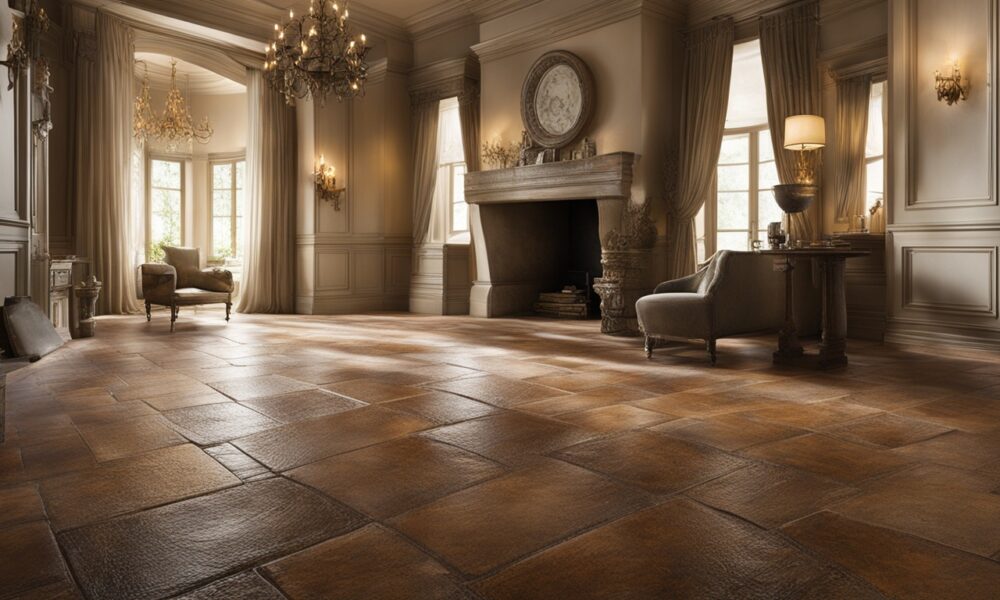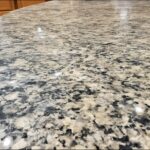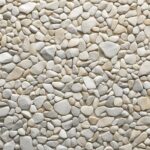Antique Natural Stone Restoration Techniques
Restoring antique stone floors is both an art and a science. It mixes the practical skills of stone repair with the goal of keeping historical beauty alive. Companies like Edison Coatings, with more than 25 years of experience, have developed comprehensive systems for this. They provide products such as consolidants, patching mortars, casting mortar, and breathable coatings. These ensure the long-lasting preservation and integrity of these ancient structures.
Key Takeaways
- Restoring antique stone floors involves both scientific methods and artistic touch.
- Edison Coatings is a leading provider in stone restoration products.
- Polished finish is the most popular and versatile natural-stone finish1.
- Two primary literature bodies form the foundation for antique natural stone restoration techniques2.
- Criteria for compensation methods include factors such as reversibility and strength2.
- Outdoor stone compensation must withstand UV rays and environmental changes2.
Understanding the Basics of Antique Natural Stone Restoration
Antique natural stone restoration is crucial for beauty and the strength of building materials. It involves examining the stone’s condition, picking the right restoration methods, and applying these methods well. This brings back the original allure of the stone.
https://www.youtube.com/watch?v=ol0jUEpfhfM
Why Restoration is Necessary
Over time, antique natural stone can suffer from erosion, moisture, and environmental harm. Edison Coatings highlights the importance of high-quality materials for effective restoration. It’s essential to inspect the stone closely before starting the restoration. This ensures the stone stays beautiful for a long time. Buildings made before 1915 often have stone foundations that might lose their interior mortar coating over time3. Keeping water away is necessary to avoid eroding the mortar and building pressure against the foundation3.
When the original mortar wears away, repointing becomes essential to keep the stones from moving or falling. This is usually done on specific parts, not the whole foundation3. It’s best to use “soft” mortar without modern cement for repairs. This keeps the structure’s authenticity and prevents future damage3.
Recycled Granite and Stone Farm Living highlight recycling stone materials’ role in sustainable building. Recycled Granite recycles about 2 million tons of stone waste yearly, helping reduce waste and creating jobs in the stone industry4. Stone Farm Living revives stones from old New England buildings, giving them new uses like patios and countertops4.
Homeowners using recycled stone in restoration must remember the variance in sizes due to handmade nature. Yet, incorporating recycled stone such as granite and cobblestones in pavers and walls adds uniqueness. It also supports green standards like LEED4.
In the end, restoring antique natural stone keeps historic structures beautiful and strong. Using the right materials and methods tailored to each project is key. Following these tips will preserve natural stone’s beauty and strength for the future to enjoy.
Common Restoration Techniques for Antique Natural Stone
Restoring antique natural stone is a detailed task. It aims to preserve the stone’s age-old charm. Techniques like grinding, honing, polishing, and grout filling are key.
Grinding
Grinding is crucial in the restoration journey. It smooths the stone using diamond abrasives. A 50# grinding disc is typically used. You can choose between dry grinding or water grinding. Water grinding often yields better results5. This method makes the surface smooth and ready for the next steps without dust6.
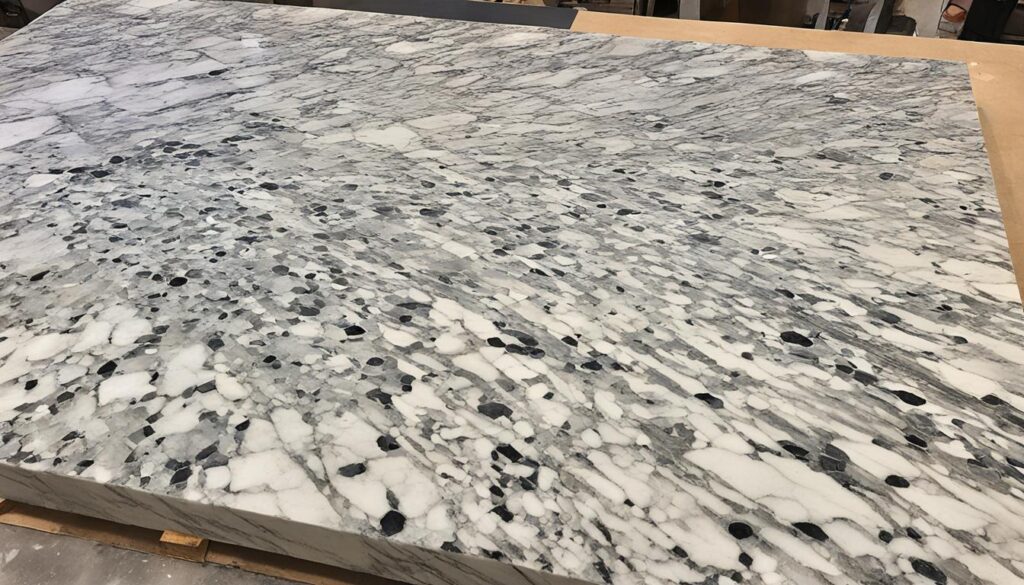
Honing
After grinding comes honing. It uses finer abrasives to soften the stone’s surface. For stones like marble and granite, it eliminates small scratches and gives a matte look. Sometimes, a 46# antique grinder is used for cleaning and prepping the stone for more work5.
Polishing
Polishing is the next step. It brings out the stone’s shine and reveals its natural beauty. This is particularly true for veined stones like travertine marble. Starting, the aim is a 55 to 60-degree shine, then increasing to 85 degrees or more5. This step might need a professional if the stone has acid damage6. For badly worn stones, several polishing rounds might be necessary6.
Grout Filling
Grout filling is vital for antique stone floors. It fills gaps between tiles, making the floor smooth and sleek. Top-quality grout from brands like Edison Coatings is preferred. The steps include cleaning old grout lines and applying new grout for a unified look5. Done right, it significantly elevates the floor’s appearance and strength.
Antique Stone Cleaning Methods
Preserving antique stone surfaces needs the right cleaning methods to keep their beauty. Different natural stone tiles like marble and granite need to be cleaned regularly. They also need resealing every 1 to 3 years7.
First, understanding the damage type on antique stones is key. For problems like etching or discolorations, specific cleaning methods are used. It’s best to use pH-neutral cleaners instead of acidic ones to avoid harm7.
For gravestones and historical markers made of materials like limestone, professionals follow a “Do No Harm” method8. They use a safe cleaner like D/2 for removing stains from moss and mold8.
- Soft dry mops or microfiber cloths are great for dusting without scratching7.
- Quickly cleaning spills can stop stains and preserve the stone7.
- Choosing the right stone cleaners is crucial for keeping natural stone tiles in top shape7.
Newer preservation methods like biological cleaning have become popular. These gentle methods show how stone conservation is improving9. It’s a sign of growing better in the field of stone preservation9.
- Abrasive scrubbers can harm stone, so soft cloths are better7.
- Keeping a regular cleaning routine helps prevent dirt buildup and extends the stone’s life7.
Using these cleaning methods can greatly improve the lifespan of stone surfaces. They make them look new and ready for any needed restoration789.
Stone Restoration Tips for Long-Lasting Results
Starting a stone restoration project involves some key steps. First, picking the right consolidant is important for stones with less stickiness. This ensures the stone keeps its strength and looks good over time.
Choosing the right mortar is also crucial. It should not expand much with temperature changes. This stops cracks and other damage in places with big temperature swings. Edison Coatings offers mortars that fit different restoration needs well.
When picking finishes for restored stone, look at both beauty and lastingness. Stones like marble and granite have various finishes, like shiny or dull. Each type of finish needs its own repair method. For example, fixing honed granite might need different resins than polished granite10.
Taking care of marble is a lot of work. It includes sealing it every 6-8 months, using special cleaners, and removing stains with a special method11. This keeps the marble looking good and strong.
The right repair method depends on the stone and the damage. Options range from simple resin fixes for small chips to more complex methods for bigger gaps10.
Repairing stone often uses steps like buffing, sanding, polishing, and removing scratches. If reshaping is needed, these steps help match the stone perfectly11.
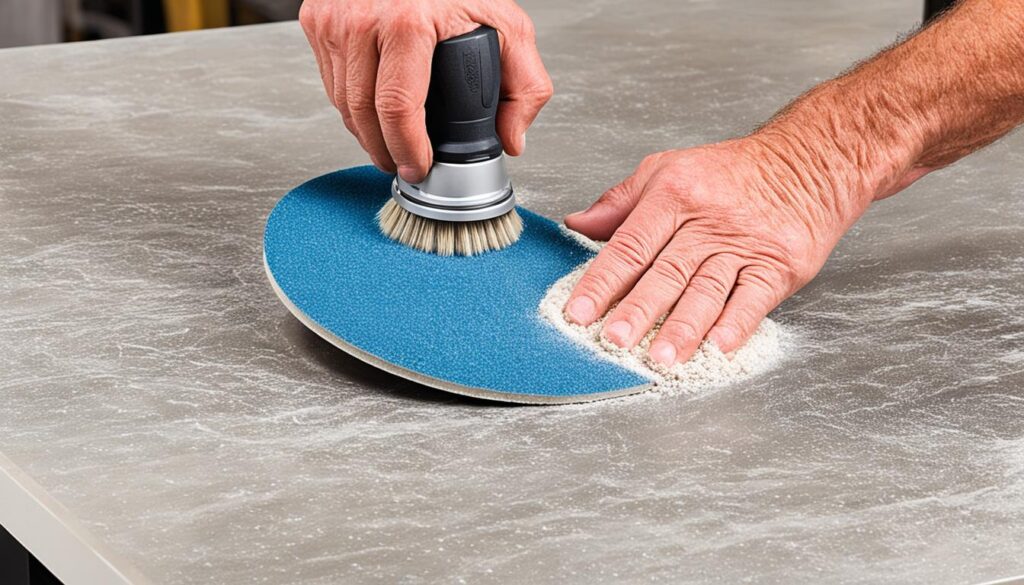
Good dust control is key when polishing stone dry to catch fine dust and lower health risks from crystalline silica12. Using variable-speed polishers with wet methods helps control the cut, pad heat, and finish. This gives a top-notch final look12.
Don’t skip the grits when restoring stone. This ensures scratches are removed well. It makes the surface smoother and more polished12. For granite, using products like MB-20® Granite Polish and Kristal Blu makes a great finish12.
After restoring, keep up a regular cleaning and sealing schedule. Natural stone gets a patina over time, adding character. A paste of baking soda lifts stains from marble, keeping it looking fresh11.
By using these stone restoration tips, both homeowners and professionals can keep their stone surfaces looking great. This not only makes the stone more beautiful but also adds value to your property.
Conclusion
The journey in restoring antique stone floors brings us to an important point: saving their history with today’s skills. Understanding the basics, like the need for restoration, is key. Antique stone repair methods are special ways to make old stone look good again, ensuring they last longer.
Restoration includes detailed work—grinding, honing, polishing, and filling grout. Each step carefully helps bring back the floor’s original beauty. Plus, correct cleaning and practical advice add extra protection. These methods preserve historic places, like the Parthenon in Athens and the Monadnock Building in Chicago13.
Blending old techniques with new materials, like those from Edison Coatings, is crucial. This mix helps make the structure look good and remain strong. Real-world examples prove that traditional building methods have lasted over time13. To learn more about these old-school methods, check out historic masonry restoration best practices.
When fixing antique stones, it’s vital to respect history and use modern methods. Every repaired surface links the past and future. This approach keeps the buildings both beautiful and strong for years to come. It allows future generations to enjoy these magnificent structures.
FAQ
Why is antique natural stone restoration necessary?
What are some common restoration techniques for antique natural stone?
How does Edison Coatings contribute to the stone restoration industry?
What is the difference between grinding and honing in stone restoration?
What are the purposes of polishing antique stone?
Why is grout filling important in antique stone restoration?
What cleaning methods are recommended for antique natural stone?
What stone restoration tips contribute to long-lasting results?
Source Links
- How to Properly Polish Natural Stone
- JAIC 1998, Volume 37, Number 1, Article 7 (pp. 89 to 110)
- Stone Foundations
- Saving a Piece of History with Natural Stone – Use Natural Stone
- How are natural cave stones repaired and refurbished?
- FAQs for Stone and Tile Maintenance and Restoration Services
- How to Clean Natural Stone Tiles: Do’s and Don’ts
- Cleaning Basics
- Stone Conservation: An Overview of Current Research (1996)
- REPAIRS | WWW.STONE-REPAIRS.COM
- Marble Maintenance & The Truth About Natural Stone – Room for Tuesday
- MB Stone Professional
- Historic Masonry Restoration Best Practices

